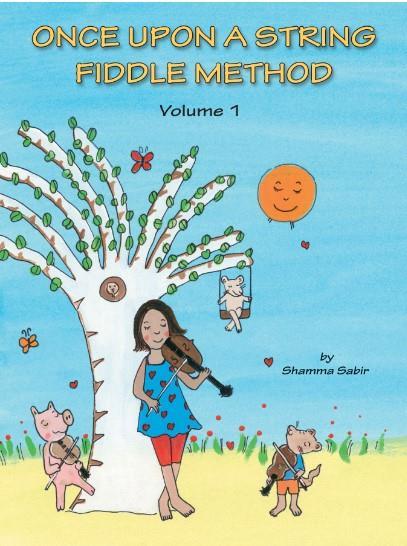Alex Laing reviews the first volume of Shamma Sabir’s innovative fiddle playing method

Once Upon a String: Fiddle Method - Vol.1
Shamma Sabir
72PP ISBN 9781705107737
Hal Leonard £12.99
This first volume of Once Upon a String follows on from Shamma Sabir’s previously released ‘Fiddle Fundamentals’. It presents the early stages of violin string technique with music from North American fiddle repertoire. Do not be put off by this: it contains super advice and strategies, directly or indirectly applicable to other genres of fiddle playing.
Sabir is clearly a thoughtful and caring teacher. She espouses the importance of always warming up, not practising too long at a time, especially if becoming physically tired, nor worry unduly about mistakes, and always listening to the music to develop the ear alongside the technique. All her advice is presented clearly and encouragingly, so young and old musicians alike will be able to relate to it.
The book is best used in the order in which it is presented. Advice on how to use it is given in the introduction. The main content is divided into fiddle warm-ups, and larger sections working in the keys of A and D major. Each presents new concepts of technique, including bow division, slurs, repeated up bows and retakes. Many tunes from the folk tradition, deploying these concepts, are provided in organised progression. The warm-up exercises are clearly described and an experienced player will quickly understand them. For the less experienced, some pictures and/or a link to video illustration would have been a valuable bonus.
There are great strengths in this volume. To get us to notice things in the music, Sabir asks us questions. For ‘Memories of Paris’ she asks: ‘Have you noticed anything interesting about this song yet?’ Answer: the end is a descending A major scale. This kind of observation is an important start to musical analysis for all young musicians. Sabir also points out repetitions, making tunes less tough to learn. In ‘The Stool of Repentance’ she colour-codes repeated phrases, showing that 6 bars out of 16 have already been learnt. Given Sabir’s emphasis on good technique, I have one quibble about the otherwise enchanting illustrations by Sarah Parsons. I tell my own students that they must never cross their legs when playing. It leads to physical imbalance and instability. So I find it a pity that the cartoon characters in this book regularly appear playing with crossed legs.
The other strengths of this volume are the tips, challenges and reviews. The reviews especially give the user a real sense of achievement. This splendid book can be used by any young fiddler and teacher. The folk tunes are very accessible and the book is charmingly presented.
ALEX LAING











































No comments yet